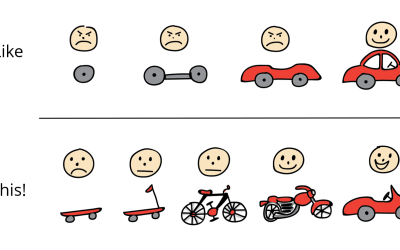No Results Found
The page you requested could not be found. Try refining your search, or use the navigation above to locate the post.

The level of data-security that Microsoft provide is far higher than many companies can afford to provide by themselves, and it is all included in the price, taking that worry away from you.
Upgrades, maintenance, and system administration are all managed at Microsoft. This means you won’t need to spend time or energy managing a dedicated IT department or contractors when servers go down or software updates mandate a system tweak.
Because there is not a big hardware install, your capital expenditure is much lower. So you benefit from better cash flow and greater flexibility, which reduces your overall costs.
You can add or remove users as your business requires them. So short-term projects become cost-effective, because you only pay for additional license fees for the duration of the project. And as your business grows, so does Microsoft Dynamics 365. Because it can run 100,000 users concurrently, Dynamics 365 will never cap your growth.
Time is money, and with the on-premise set up being far more complex, you will get a much quicker return in your business if you opt for an online system. The online system can be installed in a day and your business can be running it at its max in a matter of weeks, meaning you’ll quickly see a meaningful return on your investment.
Wherever your company expands to you’ll find that there’ll always be a Microsoft partner proficient in Dynamics 365 nearby. This means that help or advice will never be far away. With Microsoft Dynamics 365 currently operating in 40 countries in 41 different languages, it’s truly a global product.
With the world becoming more mobile, it’s essential that everyone in your business can access information wherever they are. With Dynamics 365 you don’t even need a laptop as you can get full functionality via your tablet or even your cell phone (Android, iOS, or Windows).
You only pay for the users that are active on the system. In traditional deployments you purchase a number of licenses up front but with Dynamics 365, you can adjust what you pay according to the needs of your business. So the cost is mainly an operational cost, and only increases as your business does.
Microsoft promise a 99.9% uptime or they will give you your money back. With multiple global data centres, you don’t need to worry about glitches or bugs, or even cyber attacks, as Microsoft has this covered, leaving you to focus on your core business.
Because we care about your data, if you go with us, we’ll place your data in centres in Europe, where the strict European laws ensure that your data remains your own. In contrast, if you house your data yourself, you come under the data protection laws of the country that you reside in.
If you are looking for a fully connected system so you can focus on your business, view Microsoft Dynamics 365 here!
The page you requested could not be found. Try refining your search, or use the navigation above to locate the post.
Discover More Stories

Many state that the drawing really captures the essence of iterative and incremental development, lean startup, and MVP (minimum viable product). However, some misinterpret it, which is quite natural when you take a picture out of its original context. Some criticize it for oversimplifying things, which is true. The picture is a metaphor. That’s why we’ve made this video to put the picture in its true context. Enjoy.
Check out how our implementation process makes use of the minimal viable product.
The page you requested could not be found. Try refining your search, or use the navigation above to locate the post.
Discover More Stories

This is very manageable if you are a few consultants, but when you run complex projects, with many professionals required at different stages, most firms opt for a fully integrated Professional Services Automation System. A system like this can be the difference between firms growing and firms staying still. Small efficiency gains can result in big profits.
The global research organisation, Service Performance Insight (SPI), backs this up. Data from their 2016 report: PS Maturity Benchmark, taken from 257 organisations (minimum of 100 employees, average employee size 1,315) showed that companies with a Professional Service Automation Solution achieved 26% more profits than those that didn’t. When this was combined with a CRM (Customer Relationship Management) Solution profits increased by 44% compared to those professional service organisations with neither.
We at The CRM Team love to help companies increase their profits. We sell a Professional Service Automation Solution built by Microsoft, called Project Service. It’s a complete system for project sales, resourcing, delivery and billing. We love it. See if it could help you increase your profitability by watching the two-minute overview video above.
You also might like to read our article looking at its features.
The page you requested could not be found. Try refining your search, or use the navigation above to locate the post.

Waterfall relies heavily on initial requirements. However, if these requirements aren’t documented precisely, or there was a misunderstanding around the detail of what the customer wanted, it makes things very difficult. Not so with Agile – requirements are checked and confirmed throughout the project.
Once a step has been completed in Waterfall, it’s difficult to go back and make changes. In contrast, Agile builds a working version of the whole project (an MVP) so the customer can shape how it’s built. Seeing a working version early on in the project allows the customer to say ‘I like this, but I don’t like that’, and so shape the product according to their requirements. This is harder to do with Waterfall because the customer has to outline all their preferences upfront, without seeing a working version.
With Waterfall, the product is mainly tested at the end of the project. If the customer’s needs weren’t captured well initially or they have changed since the start of the project, testing may come too late in the cycle to make big adjustments. The customer then has to find extra budget to get the product they now need. With Agile, testing happens regularly through the whole process, so the customer periodically checks that the product is what they envisioned. This also makes it more likely that the project will finish on time, and on budget.
Waterfall isn’t geared to take into account a customer’s evolving needs. If business processes change during the project Waterfall isn’t set up to adapt to this. Often a client feels locked into a project that no longer meets the current business need. In contrast, Agile not only has the ability to adapt to changing needs, but it expects them and plans for them.
Agile sees the customer as part of the implementation team and includes them at each part of the process. In contrast, Waterfall tends to spend a lot of time with the customer at the start, trying to document all the perceived requirements. But once this has happened, the implementation team usually take over.
Want to find out more? See our approach to CRM implementation.
The page you requested could not be found. Try refining your search, or use the navigation above to locate the post.
Discover More Stories

When people get more freaked out about being separated from their phone than their cash you know a paradigm shift has occurred.

Here’s the rub: like Yellow Cabs, your company may be late in embracing digital transformation – but your customer’s aren’t. They’ve already digital and they’re looking for businesses who understand how they operate and who talk their language.
Here’s another example: My business partner recently took his wife away for a long weekend. He went all out. Do you know where he stayed? In an AirBnB. He booked his beautiful, luxurious getaway through an app on his phone. The Marriott or Hilton didn’t get a look in.

Microsoft’s new CEO, Satya Nadella, who’s carried out his own digital transformation, says this:
Engaging your customers… empowering your employees… optimizing your operations… reinventing your business models – this is nothing new. Every great business leader in history has been on top of these. The difference nowadays is that the pace of technological advance is so great that if you don’t keep up you can quickly become a dinosaur – and you won’t even know it until it’s too late. Save & Exit
“Organizations must embrace a digital culture now or be embarrassed by it later.”
How is your industry doing in the realm of digital transformation? Could your industry be the next one to be disrupted by a tech-savvy start-up?
Last year, Accenture Interactive commissioned a Forrester survey of 396 organisations (minimum 1000 employees or more). They found:
Taken from ‘Digital Transformation in the Age of the Customer’
So. You’re aware of the threat/opportunity. What should you do?
The first thing you need to do is take Braden Kelly’s advice:
“You must look at your business and your industry in the same way that a digital native startup will if they seek to attack you and steal your market.”
Put yourself in the shoes of your customer. What aspect of their interaction with you feels old fashioned or clumsy? What are better ways of doing this? If you were a start-up and looking at things from a fresh perspective, what would you do to disrupt the industry?
For the Huffington Post, an online newspaper founded in 2005, that meant using the web, rather than print, to take on the big newspapers of the day. It sounds straight-forward, but HuffPost has also embraced marketing automation technology and has a highly-developed social media strategy.
But in doing so, it’s been successful. In 2011 it was acquired by AOL for $315m. In March 2016, the British national newspaper The Independent followed it’s lead and also became an online-only newspaper – halting its print run, that at its peak, had a daily production of 97,000 newspapers. The newspaper industry is in a fast-paced digital transformation.
A look at what’s possible
You might be saying ‘this is great, but I don’t actually know what is possible in my industry?’ This is understandable, but in the digital age, it’s become the job of every business leader to be familiar with the latest technology trends. It might give you just the advantage you need over your competitors.
Have a look at what is trending currently:
Beginning the Digital Transformation Journey
Of course, you don’t even need to use these technologies for your company to begin the journey of digital transformation. You need to see a new way of operating and adopt the technology that helps you do that. Technology is simply the tool that you use.
Let’s talk
Whatever your industry, here at The CRM Team we are helping many companies take their first step (or next step) along the digital transformation journey. Whether it’s as simple taking your sales team off Excel, or more complex projects, such bringing consistency with the way you engage with your customer over the four customer touch points, we can help. And of course, we’re also geared up to help you use some of the trending tech such as IoT, Machine Learning, Integrated business apps, bots etc.
What opportunity will digital transformation create for your business?
What risks does it pose?
We’d love to assist you to take your next step. And in a digital world, it doesn’t matter where you are based. Why not arrange a conversation about it today?
The page you requested could not be found. Try refining your search, or use the navigation above to locate the post.
Discover More Stories